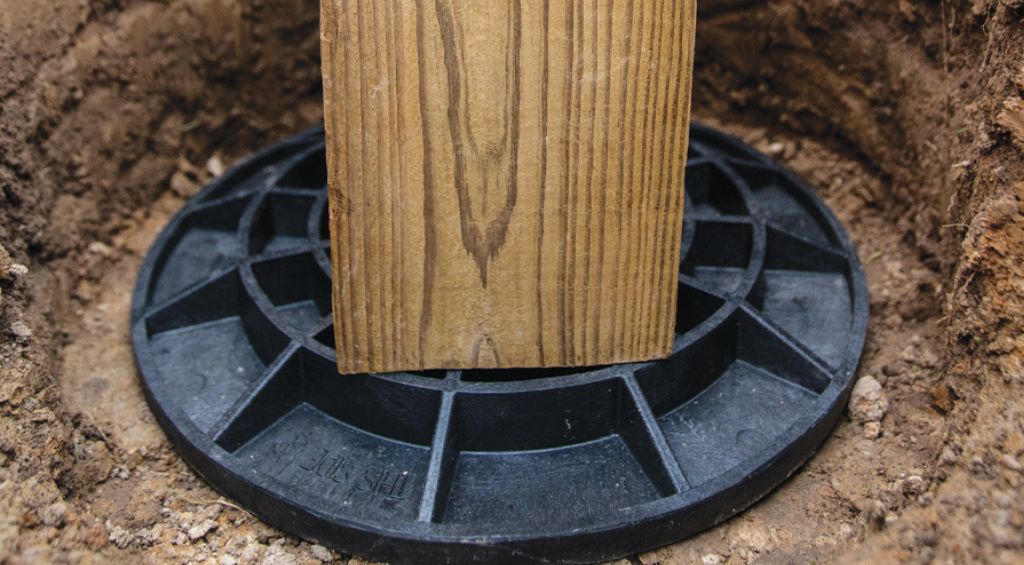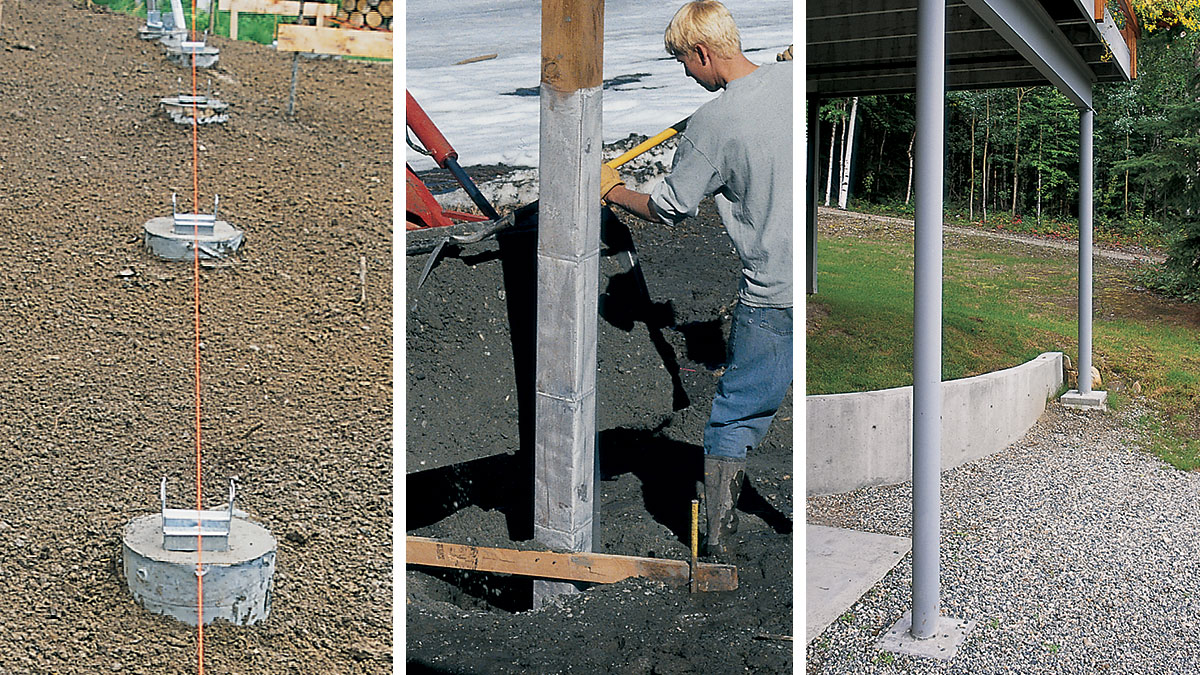Deck Footings Demystified: Making Sure Architectural Stability for Your Outdoor Area
Wiki Article
Crucial Tips for Solid Deck Ground: A Comprehensive Guide
Welcome to "Vital Tips for Solid Deck Ground: A Comprehensive Overview." In this detailed overview, we will offer you with the crucial understanding and methods to make certain a solid and secure structure for your deck. Constructing a deck is a financial investment that calls for cautious preparation and interest to information, specifically when it involves the footing. This guide will certainly cover crucial elements such as picking the right materials, evaluating soil conditions, determining tons capability, figuring out appropriate footing depth, and attaining specific installment. By adhering to these tips, you will be equipped with the essential info to develop a deck that not just boosts your outside space but also stands the examination of time. Allow's dive right into the globe of solid deck ground and establish a structure you can depend on.Picking the Right Deck Footing Materials
When choosing the ideal deck footing materials, it is vital to take into consideration the specific requirements and needs of your task. The quality and toughness of the grounds straight influence the security and longevity of the deck structure. There are a number of variables to take into consideration when picking deck footing materials.One crucial factor to consider is the sort of dirt in your location. Various dirt types have varying load-bearing capacities and drainage properties. Clay dirts have a tendency to maintain water, while sandy dirts drain rapidly. Comprehending your soil conditions will certainly aid you select footings that can successfully support the weight of the deck and avoid problems such as sinking or heaving.
Extreme temperatures, moisture levels, and freeze-thaw cycles can affect the efficiency of deck footings. In such situations, using frost-resistant products or setting up footings below the frost line can aid reduce these risks.
In addition, the size and layout of your deck should also affect your choice of footing products. Larger or more complicated decks might require much deeper or enhanced footings to guarantee adequate support. Recognizing the specific tons needs of your deck will assist you establish the suitable products to use.
Eventually, picking the right deck footing products entails careful factor to consider of variables such as soil conditions, environment, and deck design. By taking these variables into account, you can select grounds that give the necessary support, improve the stability of your deck, and guarantee its long life.
Appropriately Analyzing Soil Conditions
To correctly examine dirt problems for your deck ground, it is important to completely analyze the load-bearing abilities and drainage buildings of the soil in your area. Understanding the soil's ability to bear weight and its capacity to drain excess water will help ensure the stability and longevity of your deck.When assessing the load-bearing capacity of the dirt, it is vital to think about variables such as dirt compaction, density, and type. Various dirt kinds have varying load-bearing capabilities, with compacted soils generally offering better assistance than sandy or loose soils. Conducting a dirt examination can supply important information about the dirt's capability to support the weight of your deck.
Additionally, assessing the drainage residential properties of the soil is important to stop water build-up and potential damages to your deck - Deck Footings. Poor drain can result in moisture buildup, which can damage the foundation and cause architectural problems. It is essential to assess the dirt's ability to drain pipes water successfully to avoid these troubles
Consulting with an expert designer or dirt professional can greatly help in correctly assessing dirt conditions for your deck ground. They can offer skilled guidance and support, making sure that you choose the appropriate ground design and products based upon the specific characteristics of the dirt in your location. Making the effort to thoroughly evaluate dirt conditions will certainly help you develop a strong and resilient deck.
Determining Lots Capacity for Grounds
One essential action in ensuring the security of your deck is to properly compute the tons capability for your grounds. Deck Footings. The load capability describes the optimum amount of weight or load that the grounds can securely sustain without causing any type of architectural damages or failing. Computing the load capability for grounds entails considering different aspects such as the dimension and sort of footings, the type of soil, the measurements and weight of the deck, and the real-time load and dead load that the deck will go throughTo compute the lots ability, it is essential to speak with regional structure codes and regulations as they offer particular guidelines and demands for deck building. These codes take into account aspects such as dirt bearing capability, frost depth, and minimum footing dimensions. Additionally, it is important to engage the services of an expert specialist or an architectural engineer who can perform the necessary calculations and assessments to make certain the safety and security and security of the deck.
When determining the tons capability, it is important to precisely identify the live lots and dead lots that the deck will certainly experience. The live load describes the weight of individuals, furniture, and any various other products that will be placed on the deck, while the dead lots describes the weight of the deck itself. By accurately determining these loads you could check here and considering all pertinent aspects, you can ensure that your grounds are appropriately made to support the weight and maintain the stability of your deck.
Ensuring Appropriate Ground Deepness
Proper ground depth is crucial for making certain the stability and long life of your deck. The deepness at which the footings are set up directly influences the structural integrity of the deck, as it figures out how well the grounds can resist the pressures exerted by the deck and the dirt beneath it.When figuring out the suitable ground depth, numerous elements have to be taken into consideration. These consist of the kind of dirt, the regional climate, and the load capability needed for the deck. Typically, grounds should be put investigate this site listed below the frost line to stop any heaving or changing due to freezing and thawing cycles. In locations with large clay soil, much deeper grounds may be required to give adequate assistance.
To identify the appropriate ground deepness, it is recommended to talk to a structural engineer or structure assessor that can analyze the specific conditions of your site and offer assistance based upon neighborhood building ordinance and policies. They will think about variables such as dirt make-up, aquifer degree, and anticipated lots to identify the minimum necessary ground depth.
Installing Grounds With Accuracy
Setting up footings with precision is essential for making certain the security and architectural integrity of your deck. Properly mounted grounds supply a solid structure, making certain that your deck can stand up to the weight of furniture, individuals, and other loads. To mount grounds with precision, there are numerous crucial steps to adhere to.First of all, it is very important to accurately note the place of each footing. This can be done by utilizing a string or chalk line to produce a clear overview. By measuring and noting the exact placements, you can guarantee that the grounds are uniformly spaced and straightened.
Following, you need to dig the openings for the footings. It is critical to dig them to the appropriate deepness and diameter, as defined by regional building regulations and guidelines. This will offer ample assistance and stop the deck from shifting or sinking with time.
Once the openings are dug, it is crucial to degree and portable the soil at the important link bottom of each hole. This will certainly create a stable base for the footing to remain on and prevent any kind of settling or motion.
After preparing the holes, you can continue with pouring the concrete. Use a concrete mix that is suitable for grounds and follow the supplier's guidelines for pouring and mixing. Make certain that the concrete loads the holes entirely and is level with the ground surface.
Finally, enable the concrete to heal effectively before waging the building of your deck. This will certainly guarantee that the grounds are solid and secure, providing a safe structure for your deck.

Conclusion
Finally, ensuring solid deck ground is critical for the security and longevity of a deck framework. By picking the appropriate ground materials, analyzing soil conditions, calculating load ability, and mounting footings with precision, the risk of architectural failing can be lessened. Complying with these vital ideas will certainly help create a strong foundation for any type of deck task.Recognizing your soil conditions will certainly assist you pick grounds that can properly sustain the weight of the deck and avoid concerns such as sinking or heaving.
Consulting with an expert engineer or dirt professional can substantially aid in correctly analyzing dirt conditions for your deck ground. Calculating the load capacity for footings entails thinking about numerous factors such as the size and type of grounds, the kind of dirt, the dimensions and weight of the deck, and the real-time tons and dead tons that the deck will be subjected to.

Report this wiki page